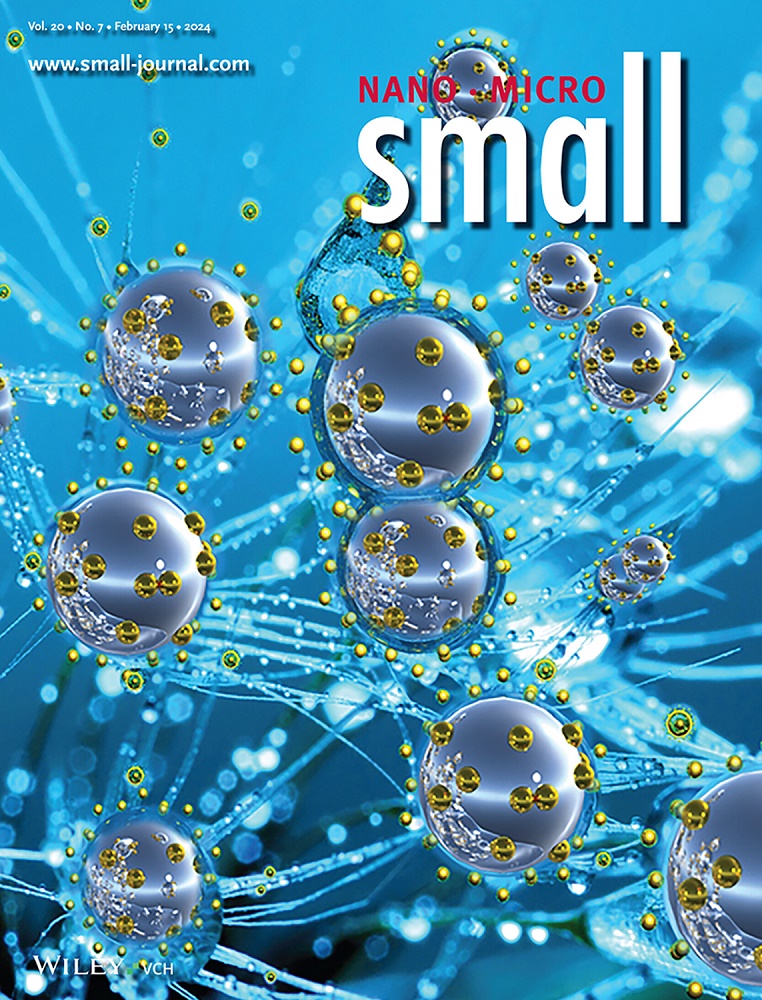Functional Group Engineering of Single-Walled Carbon Nanotubes for Anchoring Copper Nanoparticles Toward Selective CO2 Electroreduction to C2 Products
IF 13
2区 材料科学
Q1 CHEMISTRY, MULTIDISCIPLINARY
引用次数: 0
Abstract
Electroreduction of carbon dioxide (CO2) is a key strategy for achieving net-zero carbon emissions. Copper (Cu)-based electrocatalysts have shown promise for CO2 conversion into valuable chemicals but are hindered by limited C2+ product selectivity due to competing hydrogen evolution and ineffective dimerization of adsorbed CO intermediate (*CO). Here, a functional-group-directed strategy is reported to enhance selectivity using single-walled carbon nanotubes (SWCNTs) as supports. The catalytic performance of Cu nanoparticles is strongly influenced by the type and density of functional groups on the SWCNTs. Optimized Cu/amine-functionalized SWCNTs achieved a Faradaic efficiency of 66.2% and a partial current density of −270 mA cm−2 for C2 products within a flow cell, outperforming Cu/SWCNTs and Cu/cyano-functionalized SWCNTs. Density functional theory calculations revealed that the electron-donating amine groups can facilitate electron transfer from the graphite sheet to Cu atoms, thereby shifting the d-band center of Cu upward. This shift enhances *CO and its hydrogenation derivative adsorption and promotes water splitting, leading to an increased tendency for the generation of C2 products. In situ infrared and Raman spectroscopy confirm the enhancement of key *CHO intermediate coverage, facilitating C─C coupling. This work provides a molecular framework for exploring interactions between functional groups and active metals in CO2 electrolysis, offering insights for designing catalysts for a broad range of electrocatalytic processes.求助全文
约1分钟内获得全文
求助全文
来源期刊

Small
工程技术-材料科学:综合
CiteScore
17.70
自引率
3.80%
发文量
1830
审稿时长
2.1 months
期刊介绍:
Small serves as an exceptional platform for both experimental and theoretical studies in fundamental and applied interdisciplinary research at the nano- and microscale. The journal offers a compelling mix of peer-reviewed Research Articles, Reviews, Perspectives, and Comments.
With a remarkable 2022 Journal Impact Factor of 13.3 (Journal Citation Reports from Clarivate Analytics, 2023), Small remains among the top multidisciplinary journals, covering a wide range of topics at the interface of materials science, chemistry, physics, engineering, medicine, and biology.
Small's readership includes biochemists, biologists, biomedical scientists, chemists, engineers, information technologists, materials scientists, physicists, and theoreticians alike.
 求助内容:
求助内容: 应助结果提醒方式:
应助结果提醒方式:


